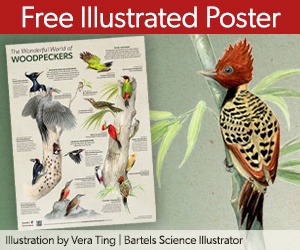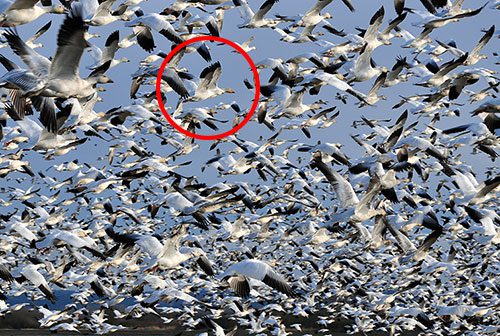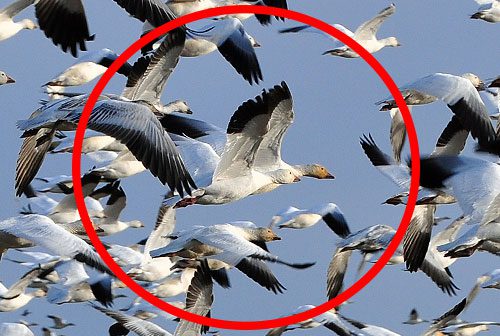Zoom+straight Spotting Scope+30-90x100 Wp+review+birding

Binoculars are great for close-up birding and can be helpful for giving yous clues to faraway birds. But for distant birds you lot'll be amazed at what a difference a spotting scope makes. You'll exist able to discover more than birds, and you'll distinguish field marks on afar waterfowl, shorebirds, and hawks that may be impossible to see with binoculars. At closer ranges you lot'll admire intricate feather details y'all never saw earlier. And if yous have a smartphone or a digital photographic camera, you lot'll have all you need to enjoy digiscoping.
As with binoculars, in that location are a number of optical and design characteristics to keep in mind when you're considering ownership a spotting scope. We'll cover some important ones here, and give y'all shopping tips to help y'all make the all-time choice. And we'll give you one basic tip correct upward front: don't attempt to employ an astronomy telescope for bird watching. Their magnification is ordinarily too loftier, they're hard to sight through, and they are often non weatherproofed.
Magnification power
Spotting scopes are medium-range telescopes, unremarkably with a magnification ability between 15x and 60x. To change magnification power, they have either interchangeable fixed-length eyepieces or a unmarried zoom eyepiece.
When you're scanning an area with a spotting scope it'south best to start with a depression power eyepiece or the lowest setting on a zoom eyepiece (for instance in the 20x to 30x range). Once you've located the birds you want to examine closely you tin can switch to higher power.
Zoom lenses
Zoom lenses change magnification power from 20x to every bit loftier as 60x with a single, unproblematic adjustment. They offering a definite advantage for bird watching, allowing user-friendly scanning at depression power and a quick shift to higher power for looking at details. Simply every bit with camera lenses, zoom lenses don't gather light besides every bit fixed lenses. Also, equally magnification increases, any telescopic (or binocular) will suffer from less light, narrower field of view, and more than vibration. High powers also magnify the effects of haze and shimmering oestrus distortion seen over h2o and other flat expanses.
Twenty years ago, a proficient zoom lens was hard to find, and the costs (both optically and dollar-wise) were large. Nowadays, many mid-priced scopes have excellent zoom lenses. At high ability, elevation quality zooms requite image sharpness and clarity about as adept as at low magnification, so purchase the highest-quality scope you lot can beget.

Binoculars can go you only and then shut to a group of birds, like these Snow Geese. For meliorate views of faraway birds, utilise a scope.

This is the view you'd go of the same flock through a spotting telescopic at a center magnification of around 30x—much better for picking out details. Photo by -jon via Birdshare.
Glass quality
Superlative spotting scope lenses are made with fluorite-coated, Hd (high density), or ED (extra-low dispersion) glass. The departure in brightness and image clarity betwixt these high-quality scopes and those made by the same manufacturers using standard glass is especially noticeable in depression-light viewing weather condition (such equally in late evening) and at loftier power. Y'all should base your decision whether to go with high quality, high priced glass on the kind of birding y'all plan to do.
Light-gathering capacity
Like binoculars, the lite-gathering capacity of a spotting scope is indicated past the size of the objective lens (the one uttermost from your eye). Depending on the model, this value is typically between nigh 50 mm and 100 mm. Larger objective lenses providing brighter images in full general, merely they as well brand scopes heavier and harder to pack in luggage.
Eyepiece placement
Some other consideration when selecting a spotting scope is eyepiece placement. Some scope models have eyepieces configured for straight-through viewing, making it like shooting fish in a barrel to apace locate and follow a subject. This seems like a natural blueprint, just many bird watchers prefer a unlike arroyo, the 45-degree angled eyepiece. This style makes viewing to a higher place the horizon easier, works with shorter tripods (which are inherently more stable), and makes birding much more convenient when you're in a group of people of different heights.
Centre relief
Eyeglass wearers should pay attention to the amount of eye relief offered by the scope. With longer eye relief, the optics direct the focal point farther dorsum behind the eyepiece so the eyeglass wearer tin run across a complete field of view. Center relief is given in millimeters in the model'south technical specifications. Generally, 12–15 mm of eye relief is acceptable for most eyeglass wearers. As with binoculars, some scope designs have folding or moveable rubber eyecups to accommodate non-eyeglass wearers.
Focusing mechanism
In spotting scopes, focusing is usually done in one of two ways. With a focusing neckband, the whole barrel of the scope is knurled or rubberized and you lot just twist the whole barrel to make the image sharper. The other design uses a smaller focus knob typically mounted on the top of the scope nearly the eyepiece. These are slower to use but permit more precise focusing. Your paw size and dexterity may be an issue hither, and so try each manner to observe your preference.
Shopping Tips
If you're using a fixed eyepiece, wait for something between 20x and 30x for full general purpose birding. Considering of the effects of heat baloney and loss of lite, beware of fixed focal length eyepieces larger than 45x unless they are tiptop quality.
Many birders prefer the versatility of a zoom lens. Many modernistic, mid-priced scopes have excellent zoom lenses. Merely don't endeavor to cut corners here—low-priced zoom lenses will probably lose light and give yous poor viewing at middle and high magnifications.
Look for an objective lens of at least 60 mm in diameter to provide a bright paradigm. If you lot want to do a lot of digiscoping, you'll want your scope to deliver the brightest image possible to your camera. Await for an objective lens around 85 mm.
Beware of cheap spotting scopes. The shortcuts the manufacturer made to produce a low-cost product will merely give you lot poor field performance and a splitting headache. Today, a few hundred dollars volition buy yous a good quality scope, and if you lot are willing to pay a thousand or more you will get an excellent optical musical instrument that, taken care of properly, volition last a lifetime.
Buy a good tripod. Even the brightest, crispest, most powerful scope won't provide a good paradigm if it's mounted on a flimsy tripod. Await for a rigid, sturdy tripod with as few leg adjustments as possible. Flip locks on the legs are a adept, quick way to extend and retract the tripod and to adjust for uneven basis.
Source: https://www.allaboutbirds.org/news/how-to-choose-a-spotting-scope/
0 Response to "Zoom+straight Spotting Scope+30-90x100 Wp+review+birding"
Post a Comment